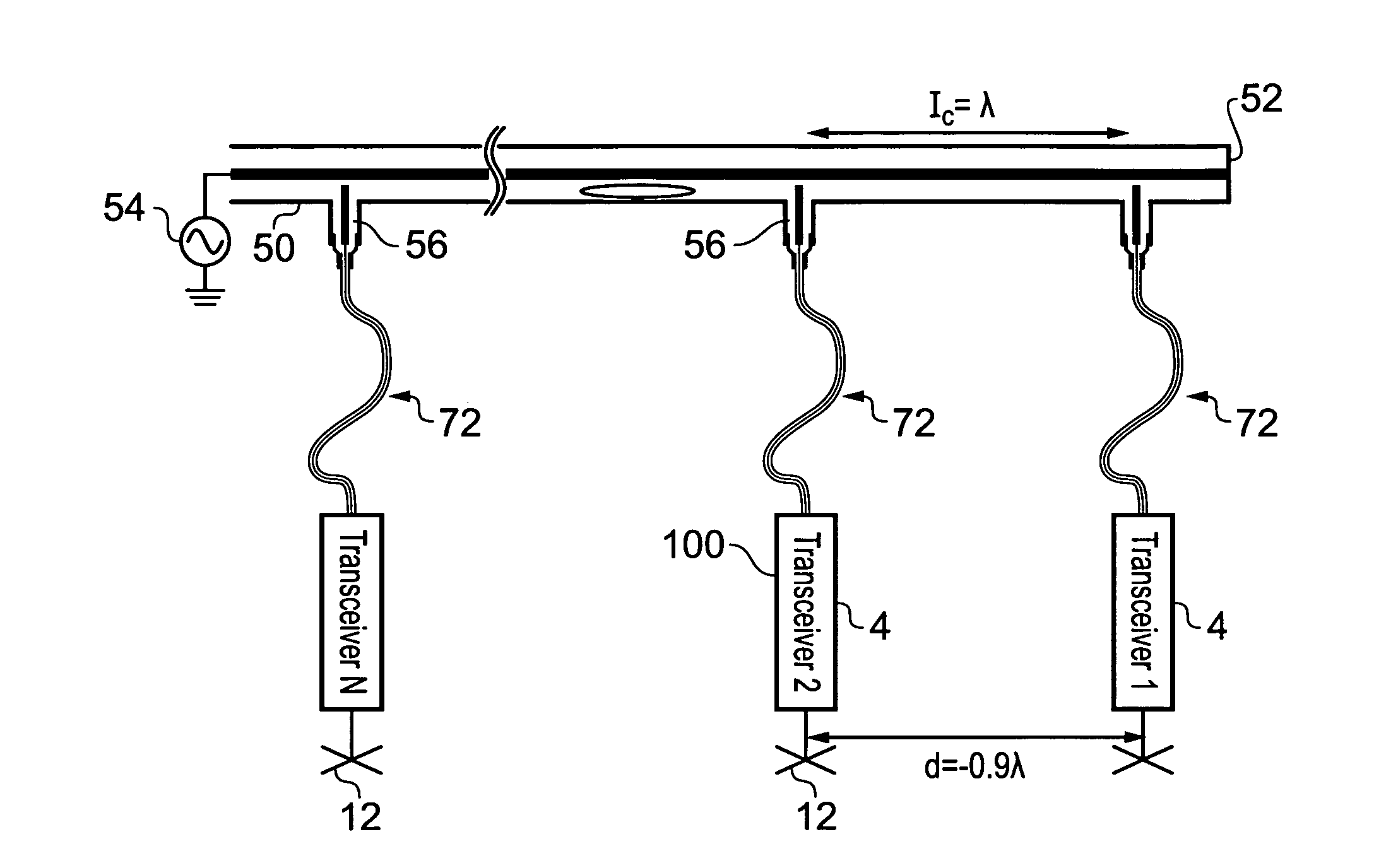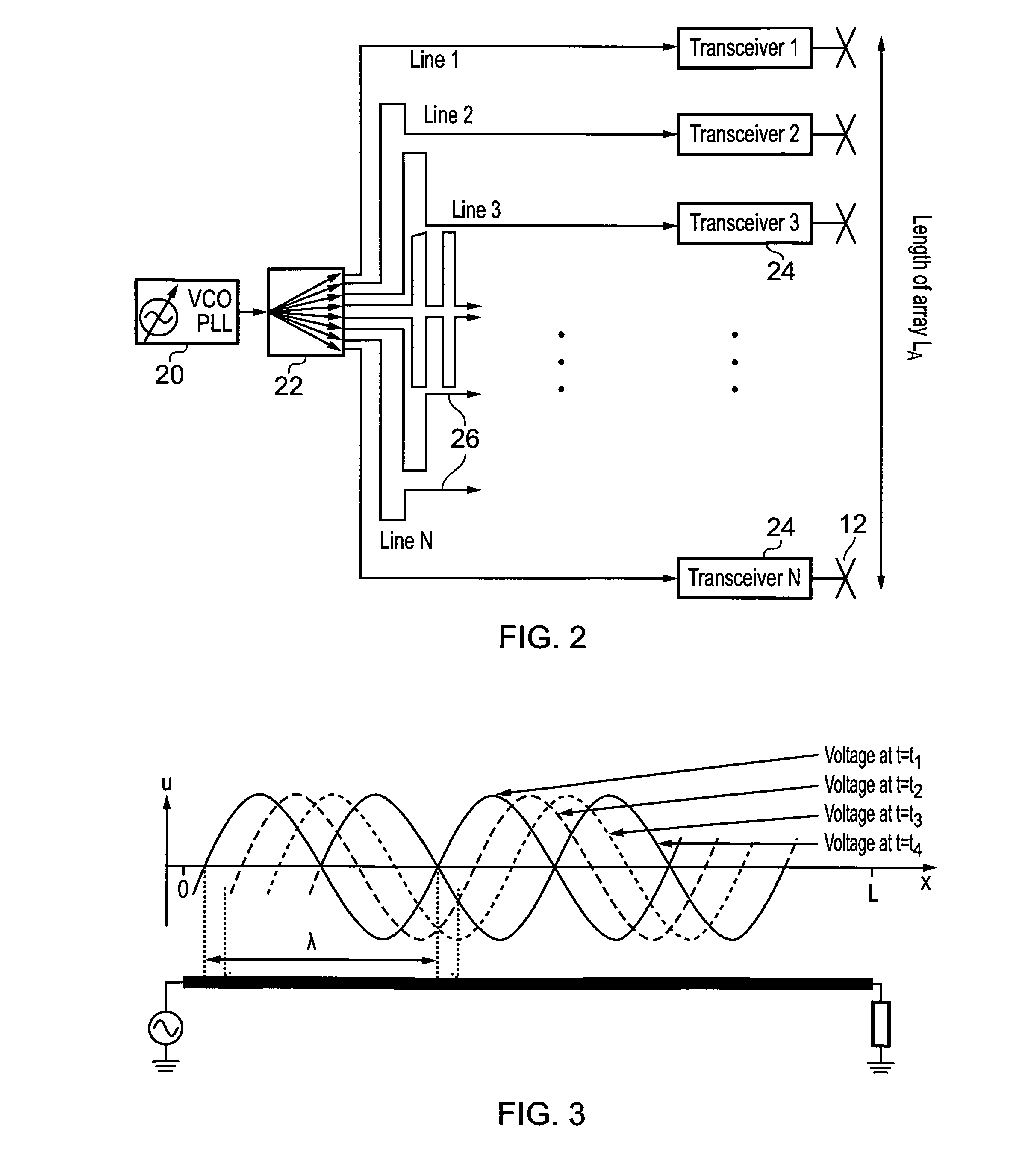Calibration of active antenna arrays for mobile telecommunications
- Summary
- Abstract
- Description
- Claims
- Application Information
AI Technical Summary
Benefits of technology
Problems solved by technology
Method used
Image
Examples
Embodiment Construction
[0028]In the following description, where reference is made to the transmit path, it will be appreciated the invention can be used in the same way to provide a reference for the receive path. The invention is applicable both to transmit and receive cases.
[0029]Referring to FIG. 2, this shows a means of distributing a reference signal of phase and amplitude to the individual transceivers of an active antenna array. A centrally generated reference signal 20 (VCO PLL) is split in an N-way-power divider 22 (1:N-splitter) and connected to the reference input of each transceiver unit 24 by respective transmission lines 26 of equal length I. Length I is nominally equal to half the length of the array IA. This forms the known star-distribution network, and any change of the line length results in a change of the phase length, giving rise to the disadvantages noted above. This is due to the travelling nature of the wave propagation on the line: the phase change Δφ is proportional to the leng...
PUM
 Login to View More
Login to View More Abstract
Description
Claims
Application Information
 Login to View More
Login to View More - R&D
- Intellectual Property
- Life Sciences
- Materials
- Tech Scout
- Unparalleled Data Quality
- Higher Quality Content
- 60% Fewer Hallucinations
Browse by: Latest US Patents, China's latest patents, Technical Efficacy Thesaurus, Application Domain, Technology Topic, Popular Technical Reports.
© 2025 PatSnap. All rights reserved.Legal|Privacy policy|Modern Slavery Act Transparency Statement|Sitemap|About US| Contact US: help@patsnap.com



